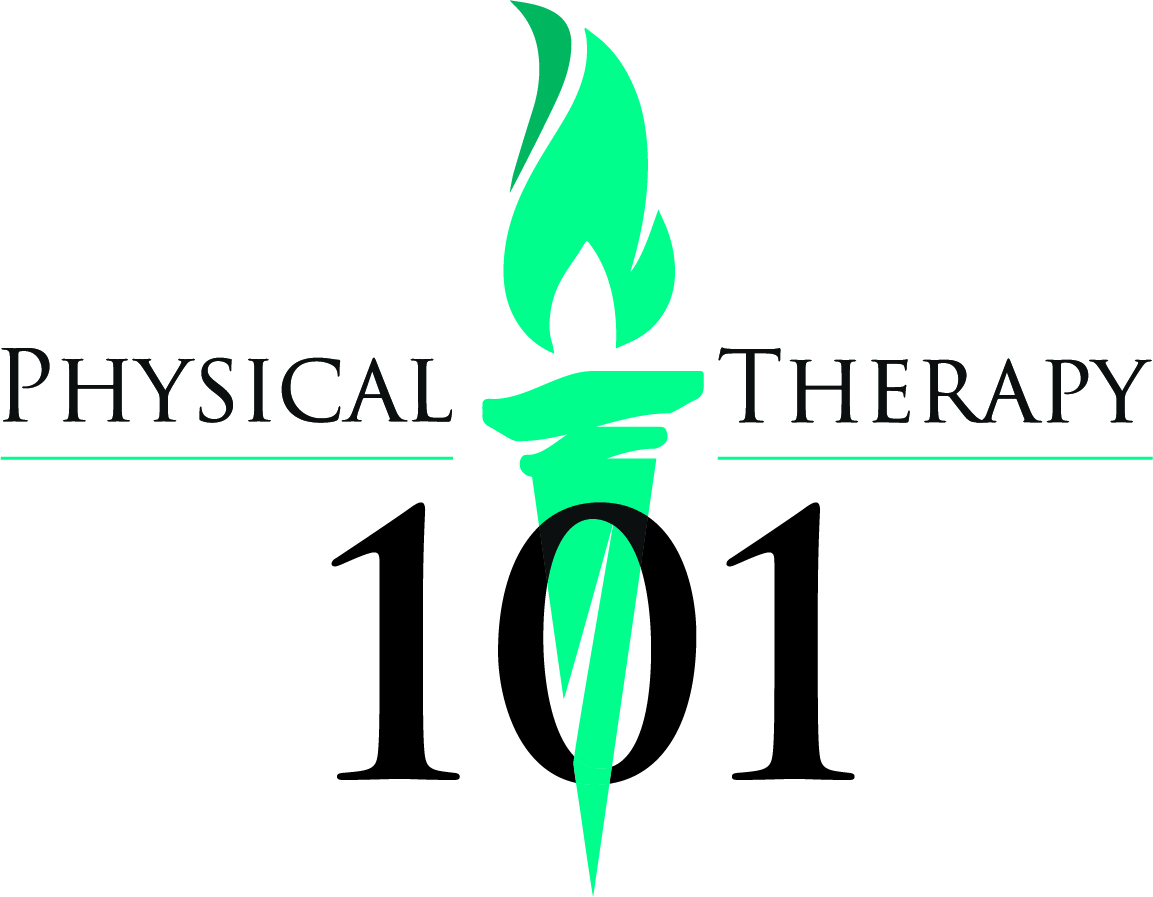Background
Spinal Stenosis in the lower back is also known as Lumbar Spinal Stenosis. This is because it is located in the section of the spine known as the Lumbar Vertebrae. In the spinal column, a person has spaces where nerve roots will pass through. In Spinal Stenosis however, these spaces are diminished causing compression on the nerve root.
Common symptoms with Lumbar Spinal Stenosis include:
- Radiating pain into the buttock, groin, and leg
- Lower extremity fatigue
- Lower extremity weakness
- Back pain either on one side or both sides simultaneously
Due to the anatomical nature of Lumbar Spinal Stenosis, patients will commonly have increased symptoms with lumbar extension (bending backwards). Additionally, patients will commonly experience relief from lumbar flexion (bending forwards). Therefore, common treatments include stretching which encourage lumbar flexion.
Recommended Products
Treatment
With Spinal Stenosis you should try sleeping on your side or on your back with your knees over a pillow. Never sleep on your stomach. It is important to use a bolster under your knees to maintain the flexed position. Picking a soft surface such as a yoga mat or a therapy table will also provide comfort.
Laying Supine with Bolster
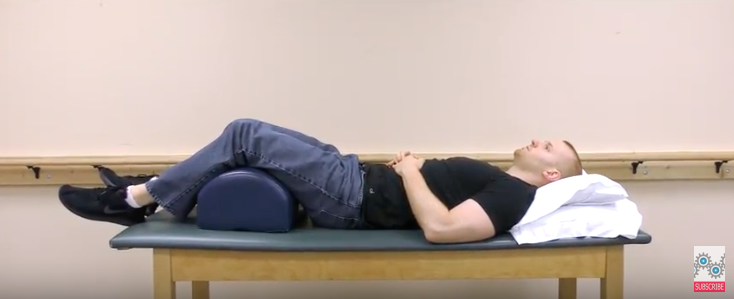 Start with a double knee to chest stretch by pulling your knees into your chest. Make sure to cross your ankles and pull the knees using both hands. It’s a good idea to alternate which ankle is on top with each stretch. Perform 3-4 times and hold for 15-20 seconds. Perform twice a day.
Start with a double knee to chest stretch by pulling your knees into your chest. Make sure to cross your ankles and pull the knees using both hands. It’s a good idea to alternate which ankle is on top with each stretch. Perform 3-4 times and hold for 15-20 seconds. Perform twice a day.
Supine Double Knee to Chest Stretch
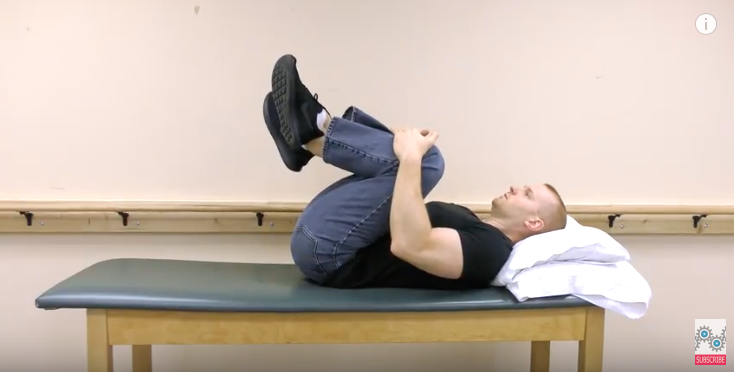
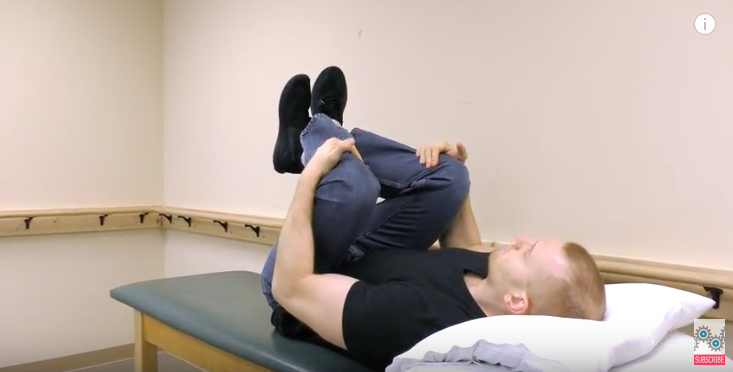 While standing, rolling your spine down as you bend forward. Allow your knees to slightly bend.
While standing, rolling your spine down as you bend forward. Allow your knees to slightly bend.
Standing Flexion Stretch
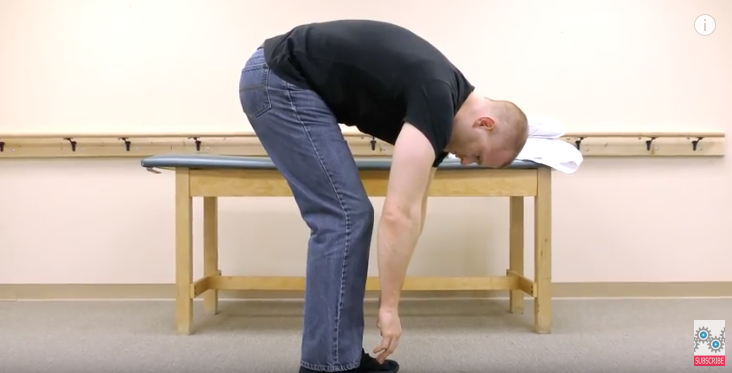
After hanging there freely for a few seconds, pull yourself a little further by grabbing the back of your legs and pulling your chest to your knees. Perform 3-4 times and hold for 15-20 seconds. Perform twice a day.
Standing Flexion Stretch with Overpressure
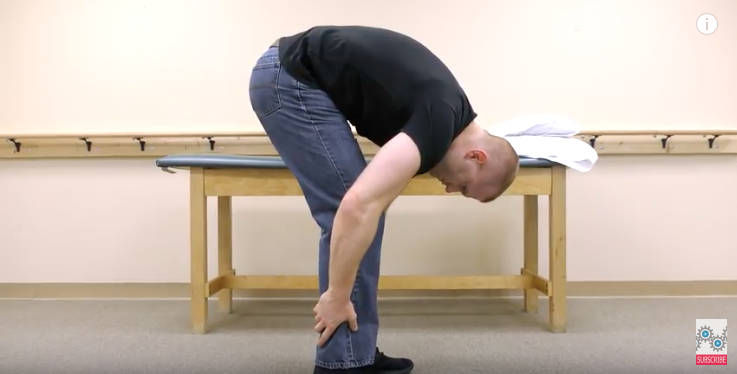
Now try it again, this time while sitting in a chair.
Chair Flexion Stretch
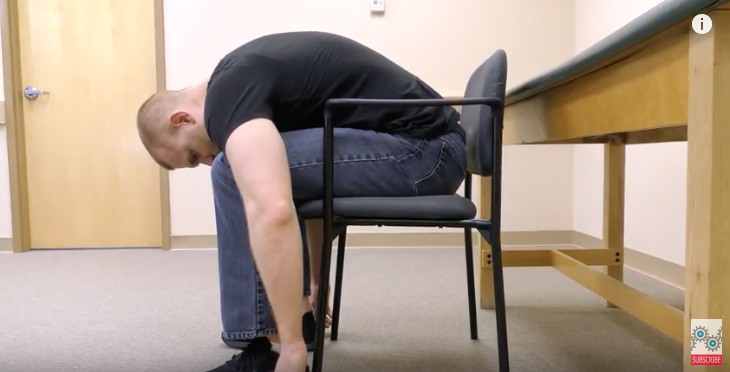
You may use the front legs of the chair to help you get a little more out of the stretch.
Chair Flexion Stretch with Overpressure
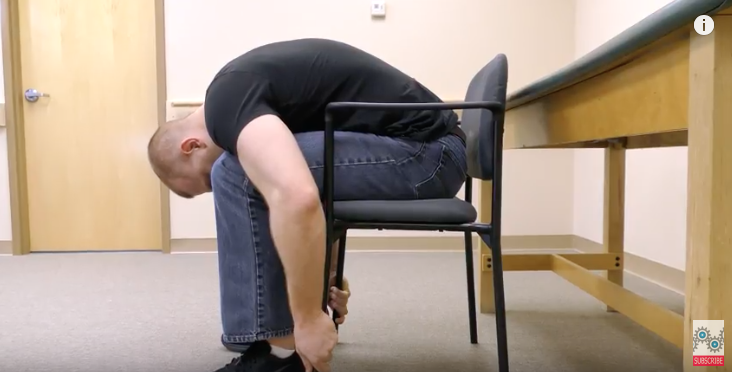
References
Genevay S, Atlas SJ. Lumbar Spinal Stenosis. Best practice & research Clinical rheumatology. 2010;24(2):253-265. doi:10.1016/j.berh.2009.11.001.
